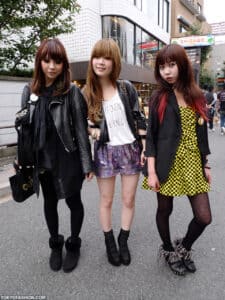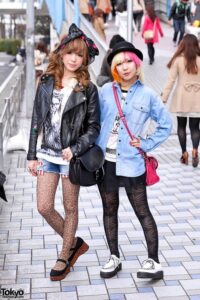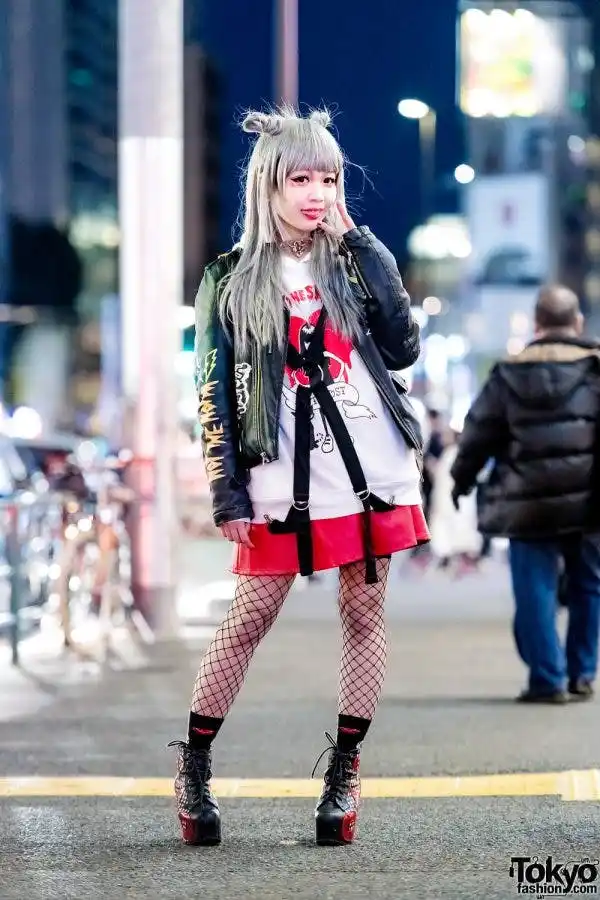Exploring Japanese Fashion: The Unique Style of Japanese Girls

In the vibrant world of fashion, Japan has carved out a distinctive niche that blends tradition with innovation, creating a style that captivates audiences worldwide. Particularly, the fashion sense of Japanese girls stands out for its eclectic mix of influences, from traditional kimono elements to cutting-edge streetwear trends. Let’s delve into what makes Japanese fashion for girls so captivating and influential.
Harajuku: The Epicenter of Creativity
When discussing Japanese fashion, one cannot overlook Harajuku, Tokyo’s neighborhood that has become synonymous with avant-garde and quirky styles. Harajuku fashion is a playground where creativity knows no bounds. It’s here that girls (and boys) express themselves through clothing in ways that defy conventional norms. From Lolita fashion, with its doll-like dresses and Victorian-inspired elements, to Gothic and Punk styles that embrace darker aesthetics, Harajuku is a melting pot of subcultures and fashion tribes.

Kawaii Culture: Embracing Cuteness
A cornerstone of Japanese fashion is “kawaii,” which translates to “cute” in English. Kawaii fashion is characterized by its adorable and youthful aesthetic, featuring oversized bows, pastel colors, and whimsical accessories. For Japanese girls, kawaii isn’t just a style; it’s a way of life that permeates fashion, pop culture, and even everyday behavior. Brands like Liz Lisa and Swankiss epitomize this sugary-sweet trend, catering to those who embrace the innocence and charm of kawaii.
Influence of Traditional Wear: Modern Takes on Kimono
Despite the modernity of Japanese fashion, traditional influences remain strong. The kimono, a timeless garment with centuries of history, has been reinvented in contemporary fashion. Modern kimono-inspired pieces blend traditional craftsmanship with modern fabrics and cuts, offering a fusion of old and new. This trend speaks to Japan’s ability to honor its cultural heritage while embracing global fashion trends.
Streetwear Revolution: Tokyo’s Fashion Forwardness
Beyond Harajuku, Tokyo sets the stage for cutting-edge streetwear trends that often define global fashion movements. Brands like A Bathing Ape (BAPE) and Comme des Garçons have cemented Japan’s reputation as a trendsetter in street fashion. Japanese streetwear for girls often incorporates oversized silhouettes, urban motifs, and high-tech fabrics, creating a look that is both edgy and functional.
Fashion Icons: Japanese Celebrities and Influencers
Japanese fashion icons and influencers play a pivotal role in shaping trends and setting standards. From models like Kiko Mizuhara to celebrities like Ayumi Hamasaki, these figures influence not only what Japanese girls wear but also how fashion is perceived globally. Their style choices are often a blend of sophistication and whimsy, reflecting Japan’s diverse fashion landscape.
Global Impact: Japanese Fashion Beyond Borders

The impact of Japanese fashion extends far beyond its shores. Fashion enthusiasts worldwide look to Tokyo Fashion Week and Japanese street style blogs for inspiration. Brands collaborate with Japanese designers to infuse their collections with a touch of Tokyo’s avant-garde spirit. Whether it’s the latest from Shibuya’s boutiques or the understated elegance of Ginza, Japanese fashion continues to inspire and innovate on a global scale.
Conclusion
Japanese fashion for girls is a tapestry of tradition, innovation, and creativity. From the playful kawaii culture to the avant-garde experimentation in Harajuku, Japanese girls’ fashion celebrates individuality and self-expression. It’s a fusion of old and new, East and West, that continues to captivate and influence the world of fashion. As trends evolve and new subcultures emerge, one thing remains certain: Japanese fashion will continue to push boundaries and redefine what it means to dress with style and flair.
